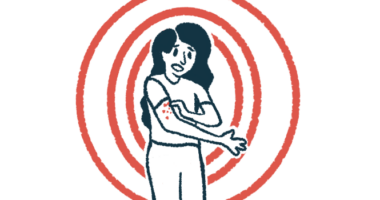Why Mexican children with Alagille lag behind in getting proper care
Limited patient access in Mexico to healthcare, genetic testing, liver transplants

Children in Mexico living with the complex genetic disease Alagille syndrome have limited access to essential care, including confirmatory genetic testing at diagnosis and, critically, liver transplants, a study reports.
The research, which also identified six new Alagille-causing mutations in the JAG1 gene, points to a significant gap in the country’s healthcare system for this rare patient population.
“These findings highlight a significant gap in care, suggesting that patients with ALGS [Alagille syndrome] may be underrepresented in liver transplant programs or face barriers to access, while also reflecting the need for novel treatments,” researchers wrote.
Disparity in treatment access
While the clinical features of Mexican children with Alagille syndrome are largely similar to those found in other populations globally, researchers found a striking disparity in treatment access, noting a lower-than-expected rate of liver transplants and the absence of approved therapies like IBAT inhibitors.
Their study, “A Retrospective Study of Clinical and Genetic Features in a Long-Term Cohort of Mexican Children with Alagille Syndrome,” was published in the International Journal of Molecular Sciences.
Alagille is a complex genetic disease that can lead to a wide range of symptoms affecting several body systems. The flow of bile, a digestive fluid, may stall in the liver, often because of poor development of bile ducts (the tubes that transport bile). Ultimately, this stalling of bile flow, or cholestasis, can cause itching and liver failure, in which a liver transplant is the only treatment option.
People with Alagille commonly show characteristic facial features, heart defects, eye problems, and skeletal abnormalities. This variability in symptoms “complicates diagnosis, as a significant proportion of patients fail to meet classic diagnostic criteria, … [and] limits the ability to provide accurate prognosis,” the researchers wrote.
Genetic testing is often helpful in confirming cases of suspected Alagille. Most patients carry mutations in the JAG1 gene, while a minority have mutations in the NOTCH2 gene. Both genes belong to the Notch signaling pathway, which is involved in embryonic development.
Due to the lack of a clear association between genetic mutations and clinical profiles, “case series are essential to understand disease presentation and prognosis,” the researchers wrote. However, “in Mexico, data on the clinical characteristics of ALGS are limited to a few small series.”
Insights into the local disease profile
With this in mind, the research team in Mexico set out to characterize a large number of children with Alagille. The result was “the largest molecularly confirmed series in the country and one of the most comprehensive in Latin America, offering valuable insights into the local disease profile and treatment challenges,” the researchers wrote.
The study included 22 children (17 boys and five girls) from across the country who had Alagille and available clinical records. Participants had a median age of 8 weeks at symptom onset and 12 weeks at diagnosis. Still, some children experienced diagnostic delays of up to four years.
Most children (76%) had cholestasis very early in life, and 59% of those with available liver biopsy samples showed underdeveloped bile ducts. This cholestasis rate was lower than that described in most previous studies.
Other common signs of the disease included cardiovascular problems (100% of children), distinctive facial features (90%), eye anomalies (75%), and skeletal abnormalities (71%).
Atypical Alagille symptoms included abnormalities in the eyes or ovaries. Notably, animal studies have linked the JAG1 gene to reproductive development.
“Future studies could benefit from systematic evaluation of reproductive anatomy in ALGS patients to determine whether such anomalies are underrecognized features of the syndrome,” the researchers wrote.
A total of 16 children had not undergone confirmatory genetic testing at diagnosis and were subsequently tested during the study. Genetic data showed that 21 children carried disease-causing or likely disease-causing JAG1 mutations. The remaining child had a NOTCH2 mutation of an uncertain effect. Four children showed large genetic deletions that included the JAG1 gene.
6 new disease-causing mutations in JAG1 gene detected
“Overall, 21 distinct sequence variants were detected, including 6 novel [disease-causing] variants in JAG1,” wrote the researchers, who added that “broad implementation of [next-generation genetic sequencing] across Mexico could significantly improve diagnostic timelines, … facilitating access to appropriate care, genetic counseling, clinical trials, and support networks.”
Access to liver transplant, which is done in about 25% of children with Alagille globally, appeared low in Mexico. A total of 13 children required a liver transplant and went on a waiting list, but 10 hadn’t yet undergone the procedure at the time of the study’s publication.
Alternate therapeutic strategies could help reduce the need for transplants, the researchers noted. IBAT inhibitors, such as Livmarli (maralixibat) and Bylvay (odevixibat), are approved for Alagille-related itching in the U.S. and other countries, but not in Mexico. These therapies have also been associated with improved rates of transplant-free survival.
“Our results indicate that Mexican patients with ALGS have no significant genetic or [clinical] differences from other populations,” the team concluded. “However, the critical difference lies in the accessibility of timely diagnosis and multidisciplinary treatment for ALGS in Mexico.”






